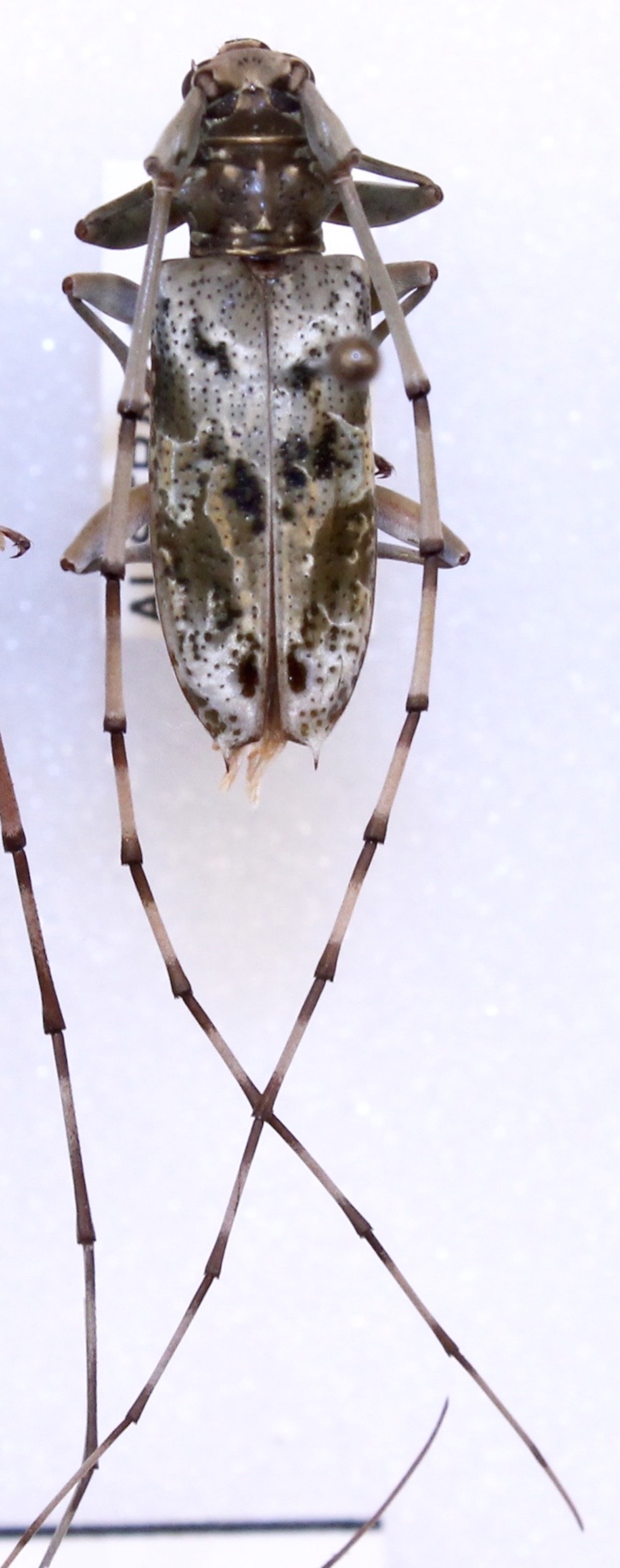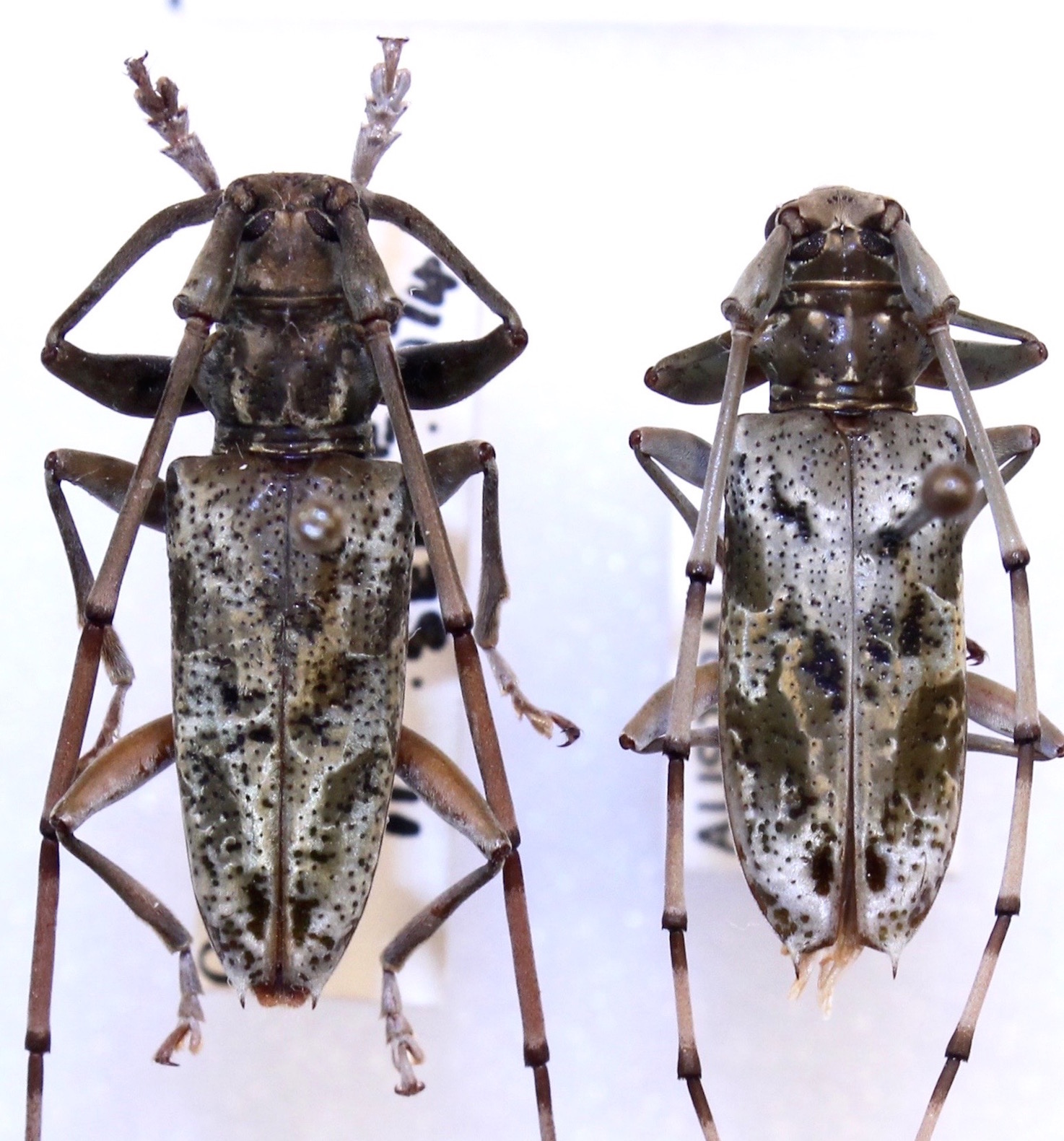| T O P I C R E V I E W |
| Gontran |
Posted - 07/01/2018 : 17:14:08

418.79 KB
From Queensland, Kuranda, 15 mm.
Probably Acalolepta acanthias (Pascoe). |
| 7 L A T E S T R E P L I E S (Newest First) |
| Gontran |
Posted - 08/01/2018 : 16:13:05
Et je reconnais maintenant ton Acalolepta antenor fasciata (Montrouzier, 1855). Dans BioLib. Mes spécimens d'Australie semblent plus "silvery".
|
| Gontran |
Posted - 08/01/2018 : 14:24:49
Thank you very much Francesco. Only one of my specimens had been identified as Dihammus acanthias (Pascoe) as per the Catalogue by McKeown.
These two from Cape York and Kuranda.
|
| Francesco |
Posted - 08/01/2018 : 08:21:26
fasciata.
It is the most widespread ssp. Widespread in Australia from New Guinea during the Ice Age. |
| Gontran |
Posted - 07/01/2018 : 23:05:47
Ils ont vraiment 11 antennomères. |
| Francesco |
Posted - 07/01/2018 : 22:58:22
A. a. acanthias devrait être une sous-espèce distribuée au delà de la zone intertropicale et caractérisée par 12 antennomères. |
| Gontran |
Posted - 07/01/2018 : 20:30:28
Je n'ai pa lu l'article mais je vais le faire. Je vois quand-même dans l'abstract n.status et n.comb pour antenor acanthias. J'ai en collection un spécimen identique de Gordonvale, N. Queensland, 14-X-1970, Ex Fig.
Je compte bel et bien 11 antennomaires pour ces spécimens australiens et aussi pour les antenor magnetica d'Indonésie. C'est OK?
Merci beaucoup aussi pour l'ID des rusticatrix très variables. ci-joint une photo plus claire de mes spécimens australiens, donc A.antenor ssp.?

490 KB |
| Francesco |
Posted - 07/01/2018 : 17:56:34
Have you read my article here???   
Acalolepta antenor... ssp.?
How many antennomeres can you count? |


